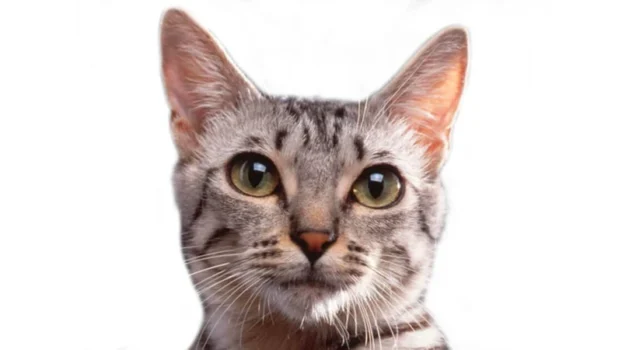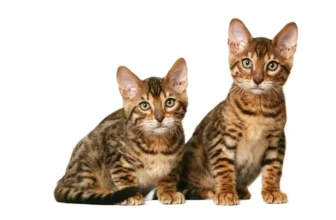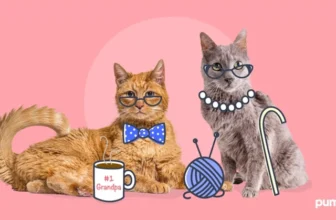As a beloved member of any household, it’s important to keep your California Spangled Cat healthy and happy. However, even with proper care, cats can face various health issues that can be scary and alarming for cat owners. As a cat parent, it’s important to be prepared and educated on how to manage common health issues that your California Spangled Cat may face. From preventative care to first-aid for emergencies, this article will provide you with step-by-step guidance to manage your feline friend’s health with confidence and ease. So, let’s dive into the world of cat care and ensure your California Spangled remains healthy and happy!
Preventative Care
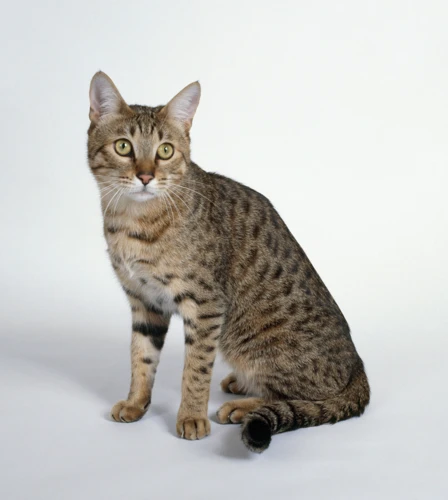
Regular preventative care is the key to keeping your California Spangled cat healthy and happy. As a responsible pet owner, you want to do everything you can to prevent common health issues from occurring in the first place. From vaccinations to maintaining a healthy diet, taking preventive steps can help save you money, time, and heartache down the road. In this section, we will cover some of the essential preventative care steps to ensure your feline companion enjoys a long and healthy life. Let’s dive in! For more on vet check-ups and how often to schedule them, see our detailed guide on Cali Spangled cat vet check-ups.
Vaccinations
Keeping up with vaccinations is crucial to the overall health and well-being of your California Spangled cat. Vaccinations are a preventative measure against several potentially fatal diseases, such as feline leukemia and Feline Immunodeficiency Virus (FIV). Here are some of the most important vaccines that your cat should receive, along with a brief explanation of what they protect your cat from:
- FVRCP: This stands for Feline Viral Rhinotracheitis, Calicivirus, and Panleukopenia. This vaccine protects against respiratory infections, as well as a highly contagious and deadly virus that attacks a cat’s white blood cells and intestines.
- Rabies: This vaccine is required by law in most states and protects against rabies, a fatal virus that can be transmitted to humans.
- Feline leukemia: This is a contagious and deadly virus that is transmitted through bodily fluids, such as saliva and blood. Vaccinating your cat against feline leukemia is especially important if they spend time outdoors or come into contact with other cats.
It is important to consult with your veterinarian to determine which vaccinations are necessary for your cat based on their age, lifestyle, and overall health. It’s also important to stay on top of regular booster shots to ensure continued protection.
Pro tip: Many vaccinations are included in comprehensive healthcare plans for cats. Check with your veterinarian to see if they offer a healthcare plan that includes vaccinations. This can save you money in the long run and ensure that your cat receives all the necessary preventative care they need.
Internal link: For more information about healthcare plans for California Spangled cats, check out our article on Healthcare Plans for California Spangled Cats.
Regular vet visits and check-ups
Regular vet visits and check-ups for your California Spangled cat are crucial for maintaining optimal health. These visits allow your veterinarian to catch potential health issues early on, while they are still manageable, and prevent them from developing into more serious conditions that require extensive treatment. Here are some key points to keep in mind:
- Scheduling appointments: Ensure that your cat has regular vet visits at least once a year for a check-up and vaccinations. If your cat is a senior or has a preexisting condition, your veterinarian might recommend more frequent appointments.
- Vaccinations: Vaccinations are vital in maintaining your cat’s good health. It protects your California Spangled cat from a wide range of infections and diseases. Many of these conditions can be fatal without early intervention. Consult with your veterinarian about which vaccinations are appropriate for your cat.
- Physical examination: A physical examination is conducted by your veterinarian to make sure that your cat is healthy. The examination comprises screening for skin issues, conditions affecting the eyes, ears, and nose, and oral health issues. Detecting these issues early on can make a massive difference in your cat’s long-term health.
- Discussion with your veterinarian: The veterinarian will discuss any health issues that have arisen since the last visit and recommend necessary treatments. This is the perfect time to ask any questions you might have about your cat’s health, behavior, and general wellness. You can also ask for advice on the best preventative healthcare measures for your cat, including diet and exercise.
Don’t miss your cat’s vet visits, as any illnesses or conditions can be picked up and treated efficiently, which will save time, money, and potentially your cat’s life. To learn more about preventative healthcare measures, diet and exercise for California Spangled cats, click here. Also, make sure your cat is spayed or neutered. It not only benefits their health but also society as a whole. Learn more about the benefits of spaying and neutering here: here.
Maintaining a healthy diet
Maintaining a healthy diet is key to keeping your California Spangled cat healthy and happy. The right combination of nutrients in their diet can help to prevent a range of health issues, while also promoting overall wellbeing.
Protein: As obligate carnivores, cats require a diet rich in protein. Choose high-quality protein sources such as chicken, fish, and beef to ensure your cat is getting the nutrients they need.
Fats: Fats provide a source of energy for cats and are important for maintaining healthy skin and coat. Look for foods that contain high levels of omega-3 fatty acids, which can help to reduce inflammation and prevent skin and coat issues.
Carbohydrates: Unlike humans, cats do not require dietary carbohydrates, and in fact, too many carbs can lead to weight gain. However, a small amount can be beneficial, particularly in the form of fiber, which can help prevent digestive issues.
Vitamins and minerals: A complete and balanced diet should also contain the necessary vitamins and minerals. Look for cat foods that contain added vitamins and minerals, or consider supplementing your cat’s diet with a high-quality multivitamin.
It’s important to note that every cat’s dietary needs are unique, and your cat may have specific requirements or allergies. Consult with your veterinarian for specific recommendations based on your cat’s individual needs. Additionally, be sure to provide plenty of fresh, clean water at all times to keep your cat hydrated.
For more information on alternate healthcare options for California Spangled cats, visit /alt-healthcare-options-california-spangled-cats/. Additionally, regular vet visits and check-ups can help to ensure your cat is on the right track with their diet and overall health. To learn more about the importance of regular vet check-ups, visit /sick-california-spangled-cat-vet-visit/.
Common Health Issues
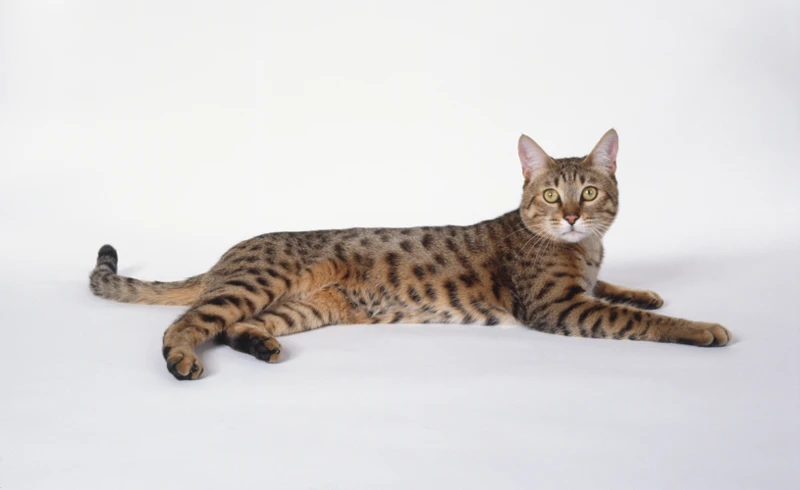
As much as we try to keep our furry friends healthy and happy, no one is immune to health issues. Unfortunately, California Spangled cats are no exception. It’s vital to recognize the common health issues and know how to manage them. Below are a few health issues that California spangled cats face most frequently and how to deal with them. It’s worth noting that early prevention is key to a healthy, long-term life for your feline friend.
Dental health
Maintaining good dental health is crucial for the overall well-being of California Spangled cats. Neglecting their oral hygiene can lead to gum disease, tooth decay, and even organ damage. Here are some steps you can take to ensure your cat’s teeth and gums are healthy and clean:
- Brush their teeth: Regular tooth brushing is the most effective way to remove plaque and prevent dental problems. Use a soft-bristled toothbrush and feline toothpaste to gently clean your cat’s teeth. Start slow and make it an enjoyable experience for your cat. You can gradually increase the time and frequency of brushing over time.
- Provide dental treats or toys: Chewing can help remove tartar and plaque from your pet’s teeth. Consider giving them dental treats or toys designed specifically for oral health.
- Watch their diet: Feeding your cat a balanced and nutritious diet can improve their dental health. Avoid giving them too many treats or table scraps that can contribute to dental issues and other health problems.
- Regular dental check-ups: Regular dental check-ups by a veterinarian can help detect any dental issues early on. Your vet may also recommend dental cleanings or treatments if necessary.
If you notice any signs of dental problems, such as bad breath, discolored teeth, or difficulty eating, it is important to bring them to the vet for evaluation. Regular preventative care can help keep your California Spangled cat’s dental health in check and avoid more serious problems in the future.
For more information on preventing dental problems in California Spangled cats, check out our article on Ca Spangled cat dental problems prevention. It is also worth noting that good nutrition, including proper vitamins and minerals, can impact your cat’s dental health. You can learn more about providing essential nutrients for your California Spangled cat in our article on vitamins and minerals for California Spangled cats.
Skin and coat issues
Skin and coat issues are common problems for California Spangled cats. Here are some of the most common problems and what you can do to manage them:
1. Fleas and ticks: Fleas and ticks can cause a lot of discomfort for your cat and can lead to skin irritation or even infections. The best way to prevent fleas and ticks is to use a flea and tick preventative medication. Consult with your veterinarian to choose the best option for your cat. Regular grooming can also help remove any existing fleas or ticks from your cat’s coat.
2. Hairballs: Hairballs can be unpleasant and uncomfortable for your cat. Regular brushing can help prevent the accumulation of hair in your cat’s stomach. If your cat already has hairballs, you can try using a hairball remedy, which can be found at your local pet store. Make sure to follow the dosage instructions carefully.
3. Dry skin: Dry skin can be itchy and uncomfortable for your cat. One way to help manage dry skin is to add omega-3 fatty acids to your cat’s diet. You can find supplements at your local pet store or consult with your veterinarian for prescription options.
4. Allergies: Just like humans, cats can have allergies too. Allergies can manifest as skin irritations, itching, or even hair loss. If you suspect your cat has allergies, consult with your veterinarian. They can perform allergy testing to determine the source of the allergy, and provide treatment options. You can also read more about allergies here.
5. Ringworm: Ringworm is a fungal infection that can cause skin irritation and hair loss. If you suspect your cat has ringworm, take them to the vet immediately for treatment. Treatment often includes antifungal medication, as well as bathing and grooming your cat to remove any spores from their coat.
By being aware of these common skin and coat issues and taking preventative measures to manage them, you can keep your California Spangled cat healthy and happy.
Respiratory problems
Respiratory problems can be quite common in California Spangled Cats. These issues can be caused by viral, bacterial, or fungal infections, allergies, or even environmental factors. Here are some steps you can take to manage respiratory problems in your pet:
- Recognize the symptoms: Watch out for signs such as coughing, sneezing, difficulty breathing, wheezing, or discharge from the eyes or nose. These symptoms may indicate a respiratory problem that needs prompt attention.
- Isolate your cat: If your cat has a respiratory infection, it’s important to keep them away from other pets to prevent the spread of the disease.
- Hydration: Ensure that your cat has access to plenty of water to stay hydrated. This is particularly important if they have nasal or eye discharge.
- Medication: Your vet may prescribe antibiotics, antihistamines, or other medication depending on the diagnosis. It’s important to follow the prescribed dosage and instructions carefully.
- Clean air: If your cat is suffering from respiratory problems, it’s important to keep the air clean and dust-free. Use air purifiers, vacuum regularly, and avoid smoking indoors.
- Humidity: Dry air can irritate your cat’s respiratory system, so consider using a humidifier to keep the air moist.
- Vapor therapy: Steam can help to open up your cat’s airways and clear congestion. You can create steam by running a hot shower and keeping your cat in the bathroom for a few minutes. Alternatively, you may use a vaporizer specifically designed for pets.
- Follow-up: Keep track of your cat’s progress and schedule follow-up appointments as advised by your vet. If your cat’s condition worsens or does not improve, seek prompt veterinary attention.
By taking these steps, you can help manage respiratory problems in your California Spangled Cat. Remember, prevention is always better than cure, so make sure to keep up with your cat’s regular check-ups and vaccinations to reduce the risk of respiratory infections.
Eye infections
Eye infections are a common health issue that California Spangled cats may experience. There are various causes of eye infections ranging from bacterial and viral infections, allergies, and eye injuries. Early detection and treatment of eye infections are crucial to prevent the development of more severe problems. Here are some signs of eye infections to look out for:
| Signs of Eye Infections | Description |
|---|---|
| Eye discharge | If your cat has excessive eye discharge or a discharge that is yellow or green in color, it could be a sign of an eye infection. |
| Redness or swelling | Redness or swelling in the eyes or the surrounding area can be symptomatic of an eye infection or other underlying problems. |
| Squinting or pawing at eyes | If you notice your cat pawing at their eyes more than usual or squinting, it may indicate an eye infection. |
If your cat is showing any signs of an eye infection, it is essential to take them to the vet immediately. The vet may prescribe medication such as antibiotic eye drops or ointments to combat the infection. In addition to medication, there are other things you can do as a cat owner to help prevent eye infections.
Regular cleaning of your cat’s eyes can help remove any dirt or other debris that can cause irritation. You can clean your cat’s eyes using a warm, damp cloth or commercially available eye wipes. Additionally, monitoring your cat’s behavior and keeping them away from allergens that may trigger an allergic reaction will help prevent eye infections.
Eye infections are a common health issue that California Spangled cats may experience. Early detection and treatment are crucial to prevent the development of more severe problems. Regular cleaning of your cat’s eyes, monitoring their behavior, and taking them to the vet for check-ups can help prevent eye infections and keep your cat healthy and happy.
First-Aid for Emergencies
When it comes to emergencies, it’s important to be prepared. As a responsible California Spangled cat owner, you should have a basic understanding of first-aid. In this section, we will go over some common emergencies that your cat may face and how to handle them. With the right knowledge and tools, you can help your cat in times of need. Remember, in any emergency situation, stay calm and seek professional help if needed. Let’s dive into some first-aid tips for your furry friend.
Cuts and wounds
As much as we may try to prevent it, our California Spangled cats may still get cuts and wounds from various situations such as playing, exploring outdoors, or accidentally scratching themselves. It’s important to be prepared to provide first-aid care to prevent further complications and promote healing. Here are the steps to treat cuts and wounds:
| Step 1: | Stabilize your cat and keep them calm. A cat in pain or scared is likely to become aggressive. |
| Step 2: | Wash your hands to avoid infection and put on gloves. |
| Step 3: | Assess the severity of the cut or wound. If it’s bleeding heavily or looks deep, seek veterinary care immediately. |
| Step 4: | If the bleeding is not severe, gently remove any debris around the wound with clean, tweezers. |
| Step 5: | Clean around the wound with a mild antiseptic solution or soap, followed by clean water. |
| Step 6: | Press clean gauze or cloth against the wound to stop the bleeding. Avoid using cotton as it can stick to the wound. |
| Step 7: | Apply an antibiotic ointment to the wound to prevent infection. |
| Step 8: | Cover the wound with a sterile bandage or wrap to keep it clean and protected. |
| Step 9: | Check the wound every day and change the bandage if necessary. Watch for signs of infection, such as redness, swelling, or foul odor. |
| Step 10: | If the wound doesn’t seem to be healing or shows signs of infection, consult your veterinarian. |
Remember, proper first-aid care can help prevent infection and promote quicker healing of cuts and wounds.
Choking or difficulty breathing
One of the most severe emergencies that a California Spangled Cat may face is choking or difficulty breathing. This can be caused by foreign objects or a respiratory condition. It is crucial to act quickly and correctly when a cat is choking or having trouble breathing. Below is a table detailing steps that should be taken in case of choking or difficulty breathing:
| Step | Action |
|---|---|
| Step 1 | Assess the situation: Determine if your cat is choking or having difficulty breathing. Signs include open-mouth breathing, rapid and shallow breathing, wheezing, or coughing. Remove any potential blockages or hazards that could further harm your cat. |
| Step 2 | Perform the Heimlich maneuver: If your cat is choking and still able to breathe, follow the steps to perform the Heimlich maneuver. Place your hands behind the ribcage and apply firm pressure until the object is expelled or your cat starts breathing properly. |
| Step 3 | Attempt to dislodge the object: If the Heimlich maneuver does not work, or if your cat is not choking but still struggling to breathe, try to gently remove any visible blockages from their mouth. Use caution and do not force anything too deep into the throat as this could worsen the situation. |
| Step 4 | Seek emergency veterinary care: If your cat is still having difficulty breathing, it is important to seek immediate veterinary care. This could be a sign of a more severe condition that requires professional attention. Transport your cat to the vet as quickly and safely as possible. |
Remember, choking and difficulty breathing can be life-threatening. It is important to stay calm and act quickly in these situations to ensure the best possible outcome for your California Spangled Cat.
Seizures
Seizures are a frightening event that can occur in cats. They are characterized by uncontrolled convulsions, tremors, and loss of consciousness. If your California Spangled cat experiences a seizure, it is important to remain calm and take the necessary steps to ensure their safety. Here is a step-by-step guide on how to manage seizures:
| Step 1: | Protect your cat from injury: During a seizure, your cat may have involuntary movements that could lead to injury. Try to gently move them away from any dangerous objects or furniture. |
|---|---|
| Step 2: | Observe the length of the seizure: Seizures can last from a few seconds to several minutes. It is important to keep a record of their length and frequency to provide to your veterinarian. |
| Step 3: | Stay with your cat: It is important to stay with your cat throughout the seizure and provide reassurance. Speak softly to them and try to keep them calm. |
| Step 4: | Seek veterinary help: After the seizure has ended, it is important to take your cat to the veterinarian for further evaluation. Seizures can be caused by a variety of underlying health issues that should be addressed by a professional. |
| Step 5: | Follow your veterinarian’s advice: Your veterinarian may recommend further testing or prescribe medication for your cat. Be sure to follow their advice and administer any medication as directed. |
Remember, seizures can be a symptom of a serious underlying health issue. If your California Spangled cat experiences a seizure, seek professional help as soon as possible. With proper management and care, your cat can still lead a happy, healthy life.
Conclusion
As a cat owner, it’s important to be proactive about managing the health of your California Spangled cat. By following preventative measures such as vaccinations, regular vet visits, and a healthy diet, you can help your cat avoid common health issues.
However, even with preventative care, emergencies can still happen. Knowing how to handle cuts and wounds, choking or difficulty breathing, and seizures can make all the difference in the life of your pet.
It’s also important to keep an eye out for any signs of dental health issues, skin and coat problems, respiratory problems, and eye infections. By catching these issues early and seeking veterinary care, you can help your cat recover and maintain their overall health and well-being.
Above all, it’s essential to prioritize your cat’s health and make sure they receive the care and attention they need. With the right preventative measures and quick action in emergencies, you can help your California Spangled cat live a healthy and happy life.
Frequently Asked Questions
How often should California Spangled Cats get vaccinated?
California Spangled Cats should be vaccinated annually or as recommended by their veterinarian.
How can I maintain my California Spangled Cat’s dental health?
Regular teeth brushing and providing dental treats or toys can help maintain your California Spangled Cat’s dental health.
What are common skin and coat issues faced by California Spangled Cats?
California Spangled Cats may face issues such as dandruff, excessive shedding, and skin allergies.
How can I prevent respiratory problems in my California Spangled Cat?
Keep the environment clean, free of cigarette smoke, and provide good ventilation to prevent respiratory problems in your California Spangled Cat.
What are signs of an eye infection in California Spangled Cats?
Signs of an eye infection in California Spangled Cats may include excessive blinking, redness, discharge, and squinting.
What is the best way to stop bleeding from a cut or wound on my California Spangled Cat?
Apply pressure to the wound with a clean cloth or gauze and seek veterinary attention if bleeding does not stop quickly.
What should I do if my California Spangled Cat is choking or having difficulty breathing?
Do not try to remove any object causing the choking. Immediately take your California Spangled Cat to the veterinarian.
What can cause seizures in California Spangled Cats?
Seizures in California Spangled Cats can be caused by various factors, including medical conditions, head trauma, and poisoning.
How often should I take my California Spangled Cat to the vet for check-ups?
It’s recommended to take your California Spangled Cat to the vet for a check-up at least once a year.
What kind of diet is best for my California Spangled Cat?
A well-balanced diet that includes high-quality protein and limited carbohydrates is best for your California Spangled Cat’s overall health.

